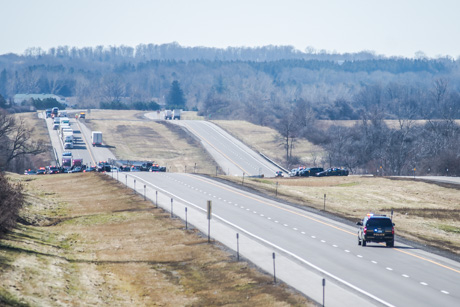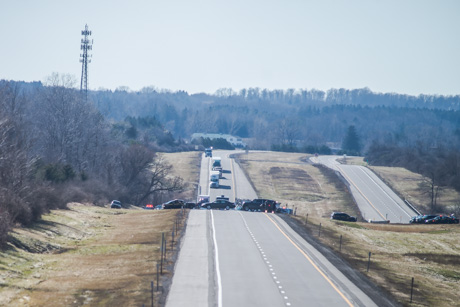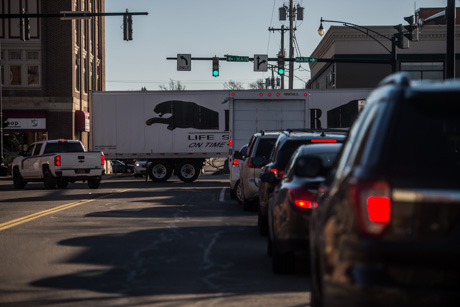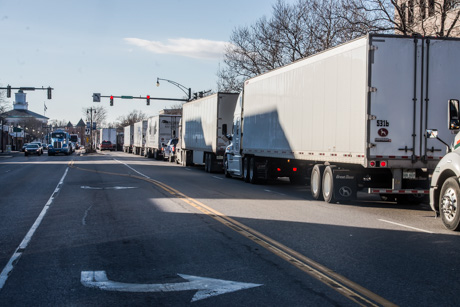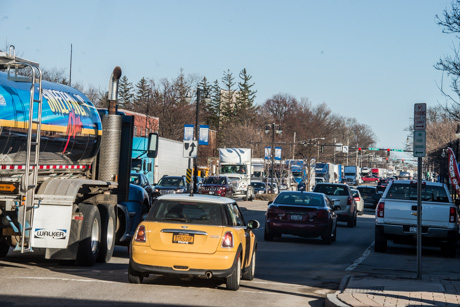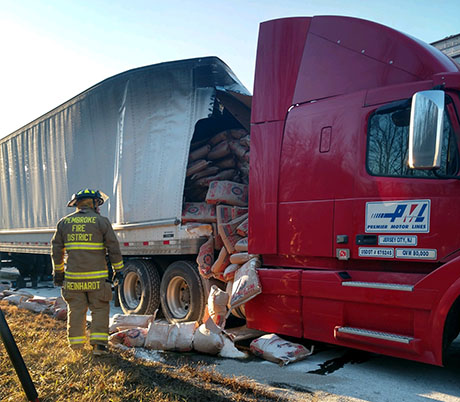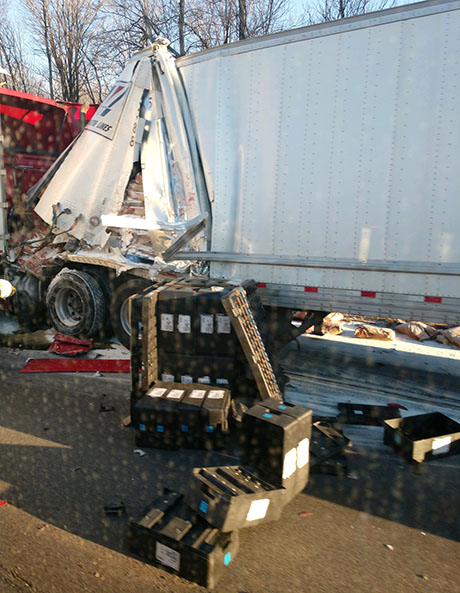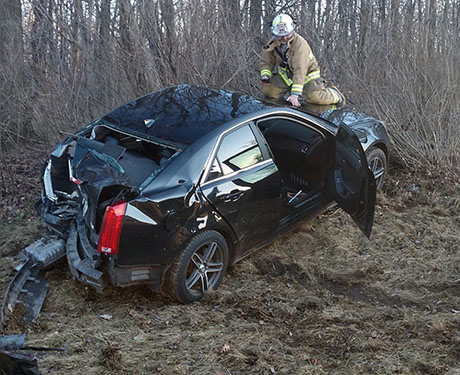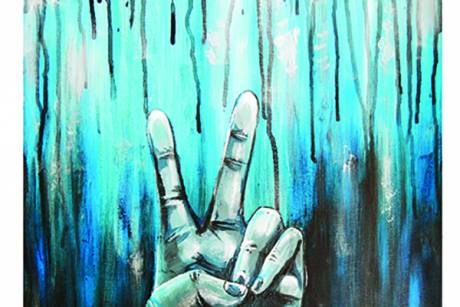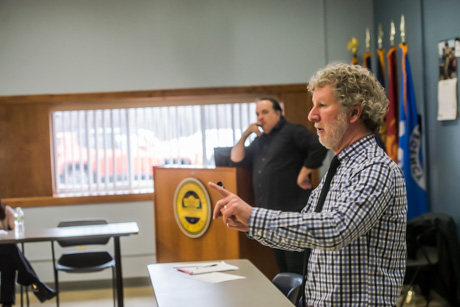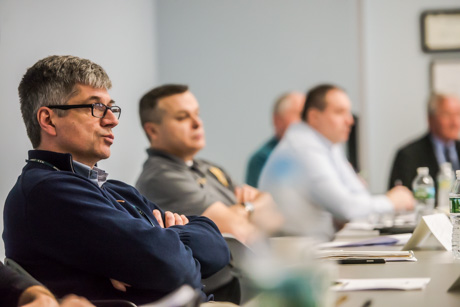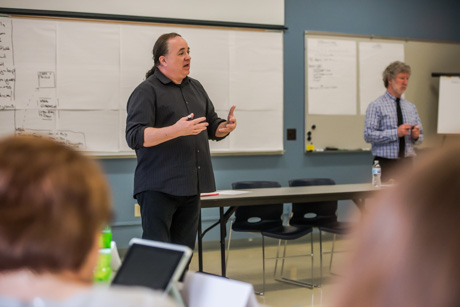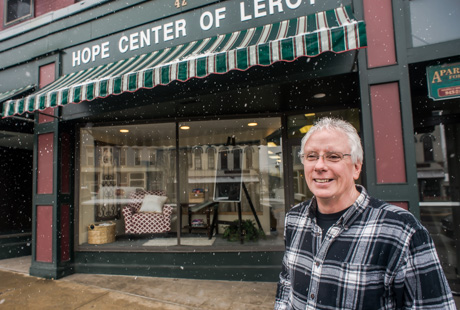New jail needed to meet changing population needs and state regulations, consultant tells county officials
Faced with increasing pressure from New York's corrections commission, officials in Genesee County are exploring the requirements and necessity of building a new jail.
Among the first steps -- meet with a consultant who has studied the local criminal justice system and the current jail and hear what he learned and what he has to recommend.
Saturday morning, members of the Legislature, senior county offiicals, and Sheriff's Office staff met to hear what that consultant, Rod Miller, president of CRS Incorporated, had to say.
The bottom line: Genesee County needs a new jail. It may need to be built to meet a projected jail population of 184 by 2042. Such a jail could cost more than $52 million.
The design of the jail must also deal with reality -- the reality of state regulations and the needs of a jail population that is ever in flux.
Miller is recommending a jail design that can accommodate a growing inmate population, but one flexible enough to accommodate an average daily population that is ever changing based on age, mental stability, special needs, and gender -- these days that means not just male and female groups. The new jail also needs to accommodate transgender individuals.
Getting the public to accept a new jail, Miller acknowledges, will be difficult, but he doesn't think the state is going to give Genesee County much leeway.
The commission, he said, takes very seriously its goal to ensure a safe and operationally efficient jail system.
New York has standards, he said. Half the states don't have standards for local jails and among those that do, New York is one of the few with strict and well-defined standards.
"To me, that's a good thing," Miller said. "You've got somebody backing you on what you need to do."
To the advantage of local officials, Miller said, the county already has the system in place to support a modern jail.
"You have a very proactive criminal justice and social services system that works well together," Miller said. "It's really very impressive."
The biggest expense of a new jail over 30 years isn't the construction, Miller said. It's staffing. That will take up 60 percent of the county's expense over the first 30 years of a new jail's lifespan.
"New York is very intensive on staffing requirements," Miller said.
The current, aging jail, however, hasn't evolved, Miller said, to meet the demands modern society puts on it, or how the local criminal justice system to keep short-term stays at the jail to a minimum.
The county's criminal justice system does a good job of diverting people from jail, toward release under supervision, or treatment for mental health problems or substance abuse. Therefore, generally, the people who are in the jail stay longer than three days -- more than half of all incarcerations -- and these are people who need to be there, Miller said.
But when it was designed in the 1980s, the architects didn't anticipate a facility that would mostly house people staying there for months at a time. That's common with older jails, Miller said.
"A lot of inmates will tell you," Miller said, "that if you're going to do a long time, jail time is the worse time."
Looking at jail population trends, the number of local average daily incarcerations is going to grow from less than 100 now to more than 180 by 2042, Miller said.
The growing inmate population locally isn't driven by more cops on the beat -- there aren't -- nor an increase in the crime rate -- it's gone down -- or any other identifiable socio-economic trend Miller said, except that more and more women are getting into serious legal trouble.
Most of Miller's projection anticipates a sizable increase in female inmate population in the coming decades. Whether that trend will continue, Miller acknowledged, just isn't something he or anybody else can predict. He said all he and the commission can do is look at the trends to come up with projections. He said intuitively, they know that much growth isn't likely, but if they back off that projection, how do they arrive at a realistic lower number? The data isn't available to support any other projection.
One thing that is known: jails need to deal more often these days with transgender individuals.
That's a sticky issue for corrections officials because you can't simply just place somebody with a male or female population based on physical appearance, what's on their birth certificate or driver's license, or their self-identification of gender. Placing an inmate with the general population based on any of those decision points is potentially dangerous.
"It's a dilemma," Miller acknowledged. "It's a practical and legal consideration. One of your obligations is protecting inmates from harm so there needs to be separation. You probably need a small housing unit for just one or two inmates at a time. You have to have that flexibility."
Jail Superintendent William Zipfel told the story of a recent inmate who identified as female. She even had a birth certificate and driver's license that said she was female.
"If you saw her sitting at a table or walking into a room, you would not identify her as anything but female," Zipfel said.
She hadn't yet gone through a sex-change operation, however, and the Genesee County Jail can't house female inmates.
"There was not another facility that was going to take her as a female and we can't put her in a male facility," Zipfel said.
Fortunately, a judge was willing to release her to the supervision of Genesee Justice, Zipfel said.
As good as the local criminal justice system is, Miller said, there is one gap local officials should consider addressing. Currently, the county doesn't have a good way to deal with people who don't have mental health or substance abuse problems but are otherwise in life circumstances where they would benefit from supervision while their cases are pending or while serving time for a conviction.
Miller recommended -- and said he's seen it work very well in other jurisdictions -- inclusion at a new jail location a facility that houses inmates during non-work hours but allows them to hold down a job. In fact, to live in the facility, inmates would be required to hold down a job and they would help cover the cost of their room and board.
The addition of a facility to house people in this subcategory of not-hardened-criminal, nor the mental health case, nor substance abuse case, especially during pre-trial periods, would be welcome by local judges and magistrates, Miller said. It's always a struggle, he said, for magistrates to decide what to do with this class of offender, whether to put them in jail or release them into the community.
The option would also assist the community by helping to prevent defendants from losing jobs, which can just make their problems worse, and therefore they become more of a burden on the community.
Jail for a defendant, Miller noted, is always the more expensive option.
The jail also isn't equipped to deal with the recently arrested who might be released in less than a day after being taken into custody.
With local courts increasingly not opening for arrests at night, more defendants are being held for extended hours until the court is open for their initial arraignment.
Batavia PD, Le Roy PD, and Corfu PD do not have appropriate holding cells for such inmates. Batavia PD might look at adding holding cells in its plan for a new police headquarters, Miller said, but that is going to add to the expense of the facility and require extra staffing to monitor detainees.
Once a police station has such holding cells, Miller said, the department's legal liability for the safety of the inmates increases tremendously.
It makes more sense, Miller said, to build the new jail with a plan to house and hold people for short-term stays and ensure those people are segregated from the regular jail population unless they are accused of serious crimes and are likely to be bound over anyway.
"The county can be the most cost-efficient and effective alternative to providing the service to the city, towns, and villages instead of letting them fend for themselves," Miller said.
Zipfel said one issue the local jail has with the state commission is how to handle new inmates.
When an inmate is processed they are classified in order to determine where in the jail they will be held. The state requires that they are tested for drugs and have a criminal history completed while they are being held for 72 hours before being classified. During that 72 hours, they should be under constant observation, the state says, and not mixed with another classification of inmate.
The Genesee County Jail completes drug testing and a criminal background check immediately upon admission and then classifies them.
The difference in procedures is a source of friction between the local jail and the state commission, Zipfel said.
Any inmate who arrives at the jail under influence of drugs or alcohol must remain under constant watch, which the current jail makes difficult for corrections officers to do safely.
Zipfel also discussed part of the admission procedure for female inmates: They are also given a pregnancy test. All of them. Jail officials are not allowed, by state regulation, from placing handcuffs on a female inmate who is pregnant or has been pregnant within the previous six weeks.
Miller acknowledged, based on his experience of going through the process in other jurisdictions, that some members of the public are going to try and find every reason not to build a new jail. He recommended officials develop a plan to educate the public on both the necessity and requirement the county is facing to build a new jail.
Which brought the legislators in the room to the discussion of whether it's realistic to discuss a regional facility shared with Orleans County. Setting aside the appearance that Orleans County seems to be heading in its own direction, officials discussed the logistic difficulty of a shared facility.
If it were in Orleans County, say, Barre, Genesee County would face the burden and expense and lost patrol time of driving inmates to and from Barre. There would also be issues to address about how the jail would be staffed, who would be responsible for it legally, or how that burden would be shared, and it isn't at all clear a shared facility would save either jurisdiction any money.
"If you have to build a jail that is twice the size with twice the staffing, how does that save money?" Legislator Marianne Clattenburg said.
There are states with examples of successful regional jails, Miller said, but in those states, the state government picked up half the cost of the jail.
That isn't likely to happen in New York.
"Unless the state picks up at least 50 percent of the cost, it's just not feasible," Legislator Gary Maha said.















